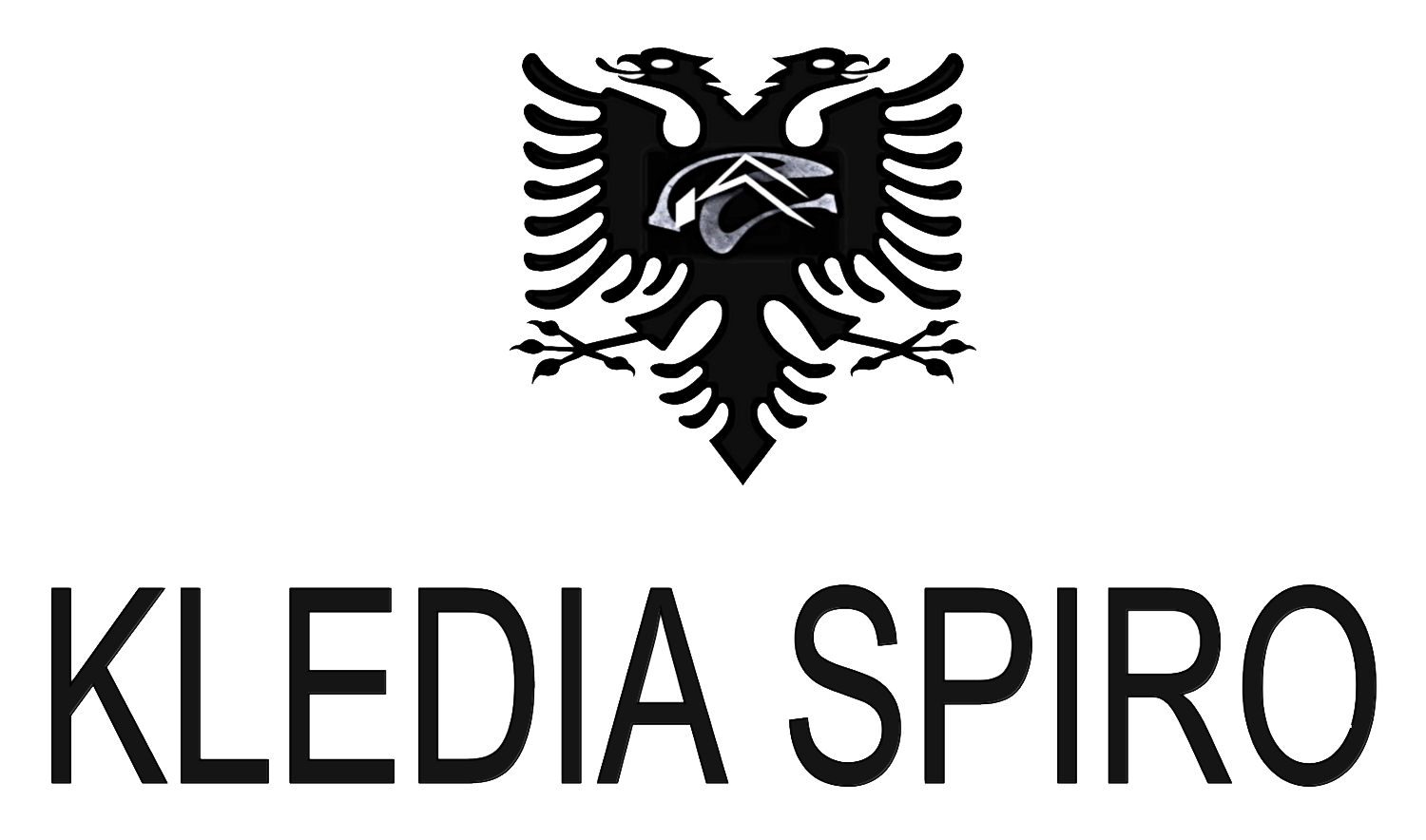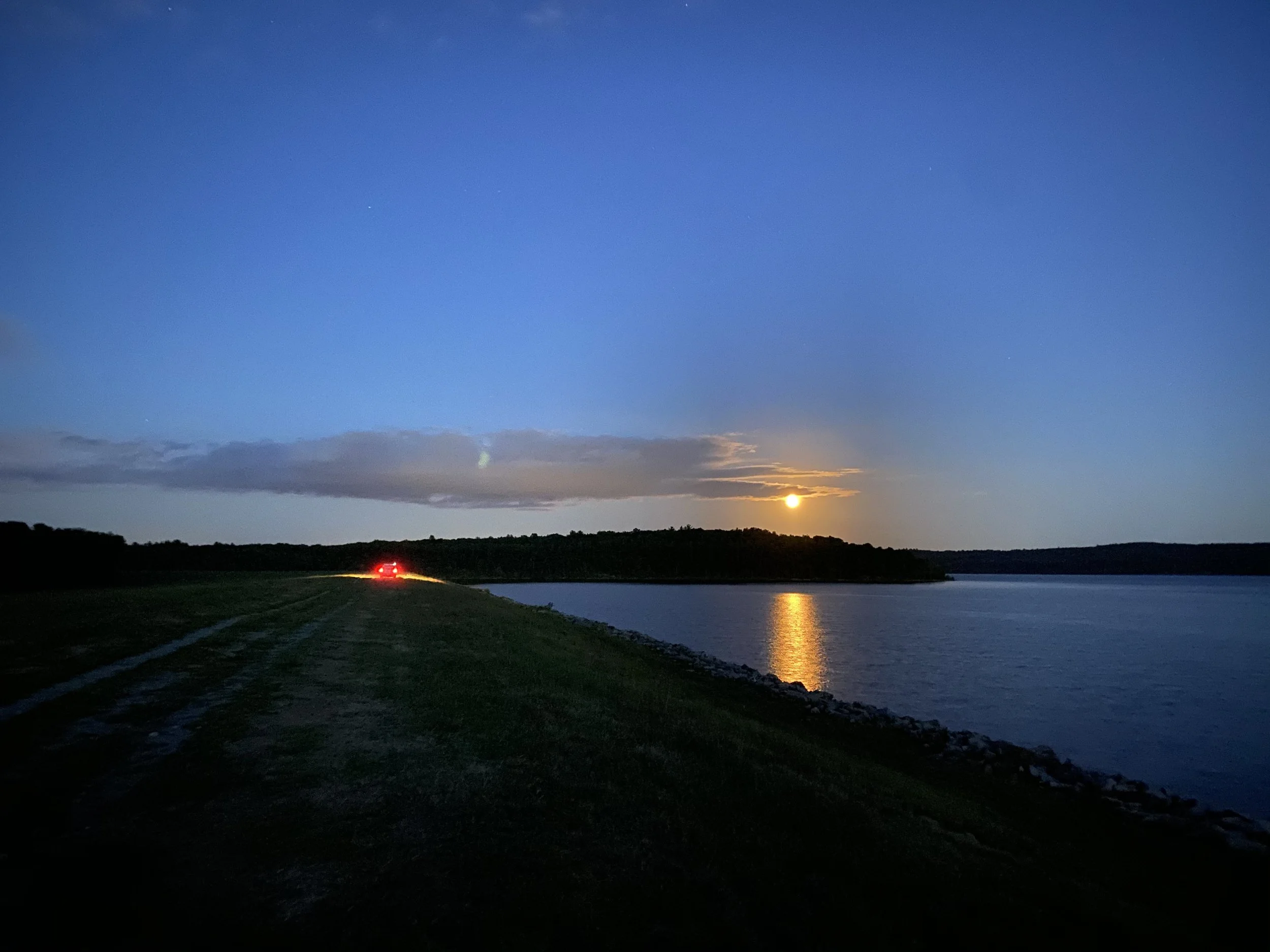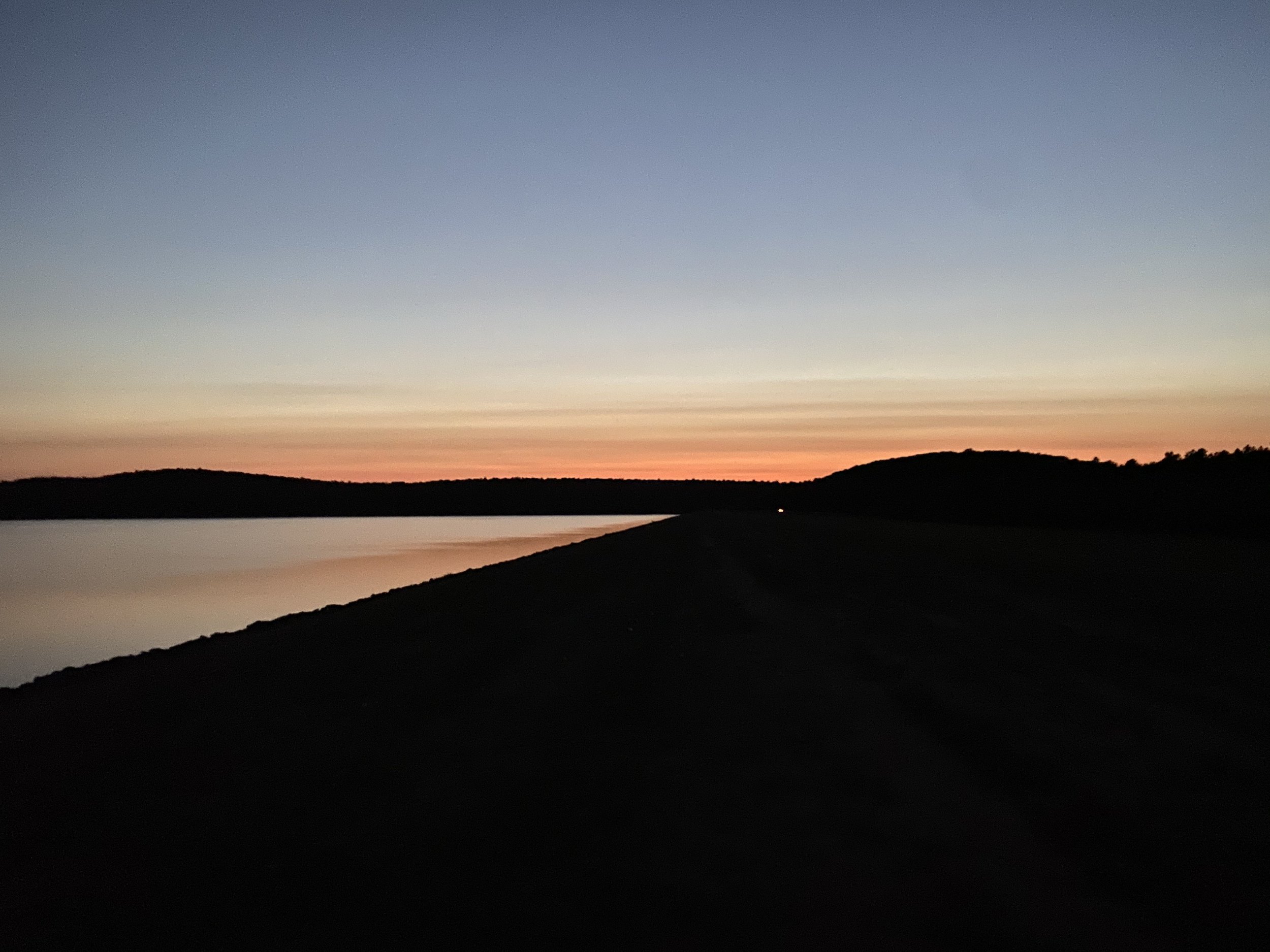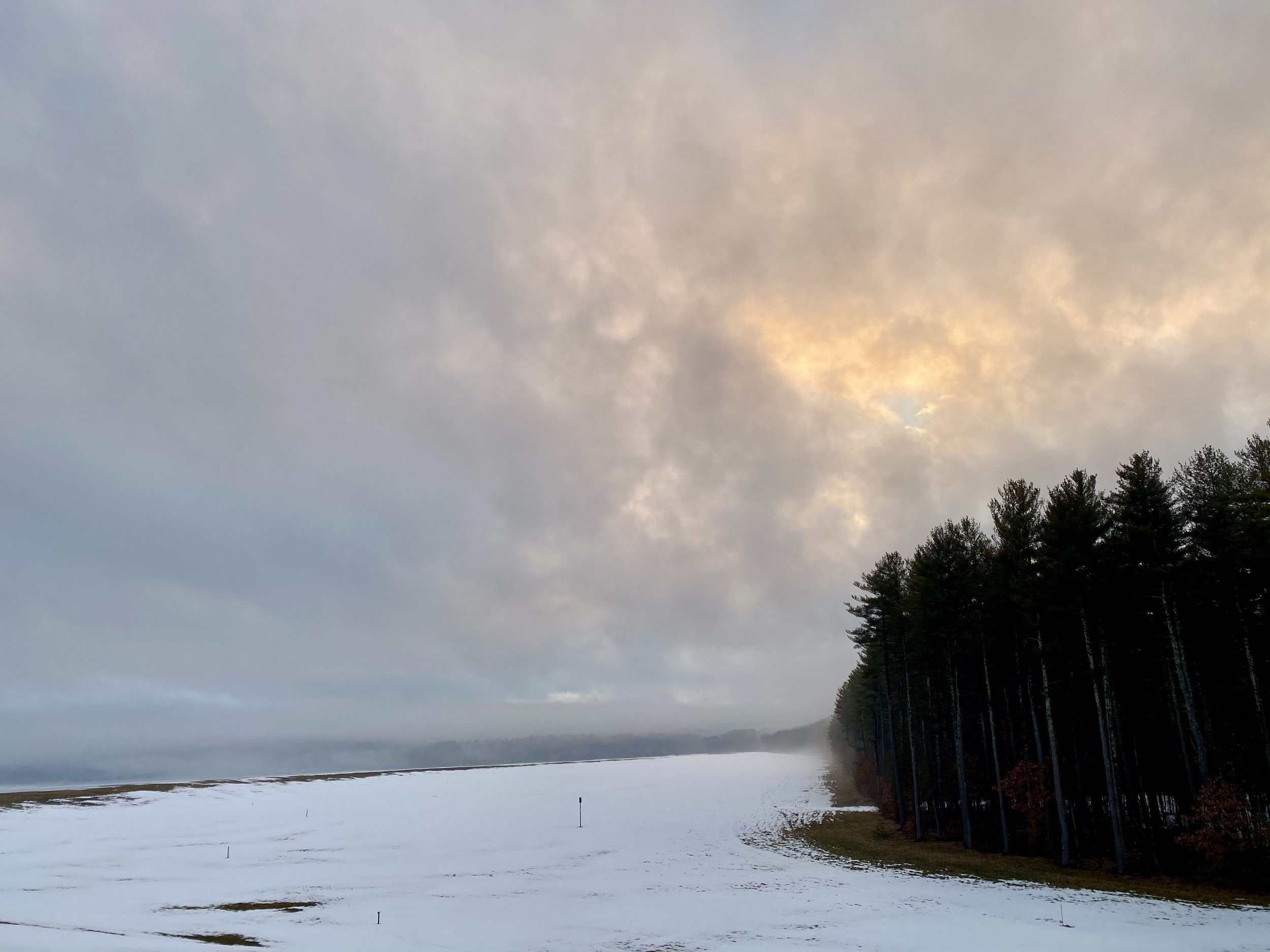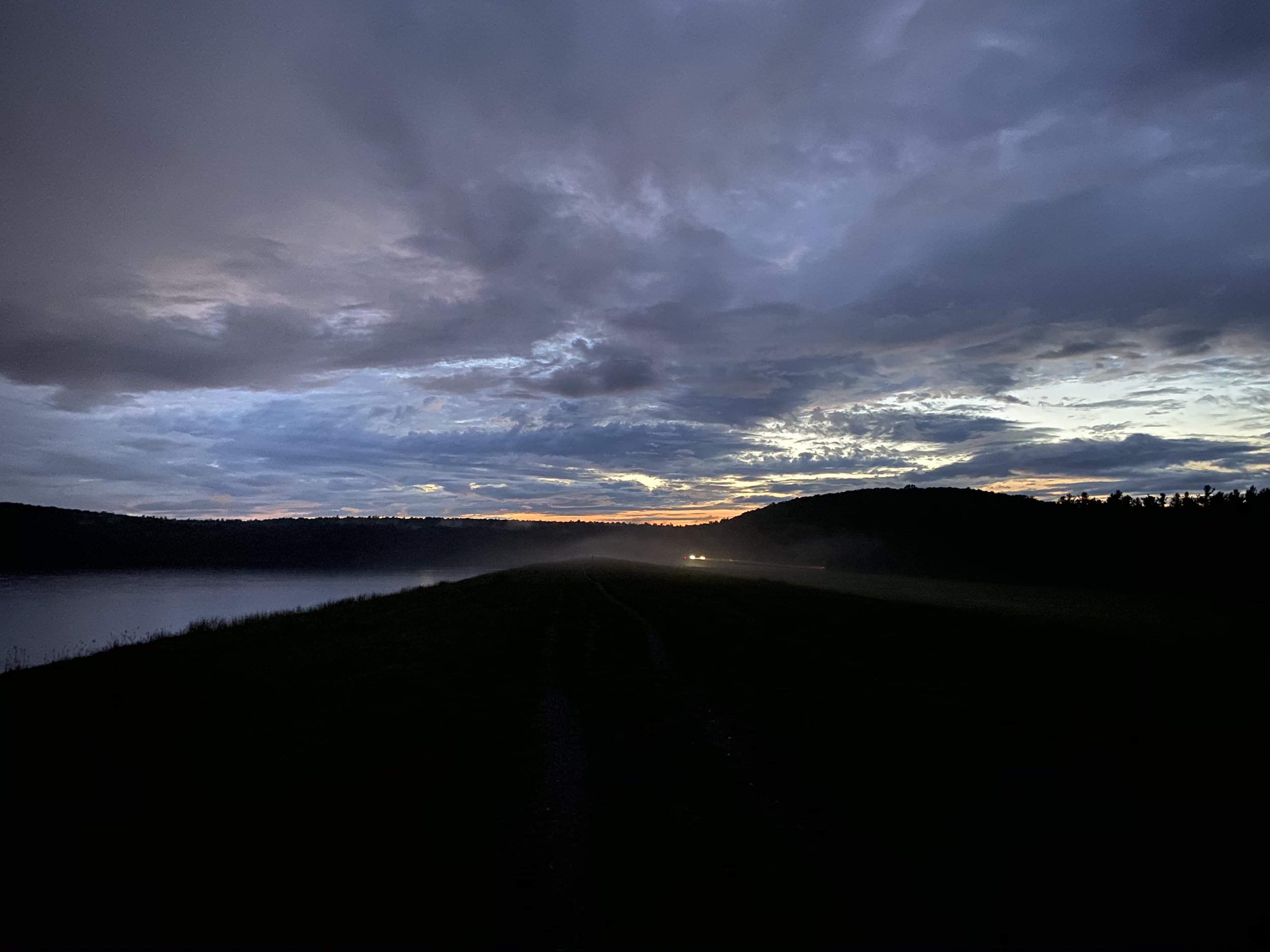Too (un)Familiar?
“Too (un)Familiar?” is a multimedia experience that includes photography, video performance, augmented reality, and installation.
Press + Media
McQuaid, Cate. "What's happening in the arts world." The Boston Globe, The Ticket, April 22, 2021.
Goslow, Brian. "Capsule Previews: March/April 2021." Artscope, February 26, 2021.
Goddard, Margaret. "Kledia Spiro: Too (un)Familiar?" Kinsgton Blog, July 21, 2021.
Response to Too (un)Familiar?, Review by Marie Anthony
My fascination with landscape photography started at the beginning of quarantine, in March of 2020. I was particularly fascinated by one reservoir, Wachusett Reservoir in Sterling Massachusetts, exhibiting (a utopic) nature. Who would have thought you can experience a utopia during a pandemic. I used to go there periodically in the past but when quarantine started I felt very pulled to go to this “sea-like” scape, where the sunset and dusk were perfect. So, I did. Almost every day for the past 12 months I have visited the reservoir and have been privileged to witness it’s changing and unchanging nature; it’s duality.
Nature, for me, provides solace, a sense of peace and freedom. It has majestic healing qualities, which are often displayed in its resilience, perseverance, and strength. These same qualities, are very much developed and inherited when a family immigrates to another country, or when one is facing a pandemic. Yet, nature seems to have a self cleaning mechanism, it’s own method of repurposing and recycling. When you’re an immigrant, you only know repurposing and recycling. There is no self cleaning mechanism in immigrant homes. Everything is precious because you don't know when you may lose it again, even if just subconsciously. All you have in your new “home” are the memories and the invaluable objects that give extra meaning to those memories. Over time, every memory becomes fragmented, like a distant dream.
Over the past 12 months, every single photo I have taken at the empty reservoir is becoming more and more fragmented, like a pixelated image. But what happens when that empty landscape is occupied, is inhabited by an immigrant family, trying to lift each other up, in the changing landscape and their new home? Can the immigrant family show nature the same level of resilience, perseverance, and strength? I believe they can. My family is one example of the millions of families that have immigrated to the United States.
On March 18, 2020, I started doing two things to ground me and as part of my art practice. I started training in my driveway, with a barbell and bumper plates, trying to fulfill my dream of one day lifting my parents. The inheritance and responsibility, coupled with the full understanding of my parents’ sacrifices, has provided me with a level of obligation, duty, and drive that I think most immigrant children can tell you exists within them. Perhaps it’s not just immigration that elicits these deep seated emotions, perhaps it’s just an unprecedented event in one’s life, an event like a pandemic, that shifts our perspective and makes us contemplate our strength and the power of our community (whether that’s family, friends, colleagues, etc). I realized my inheritance wasn’t mine alone, my sister, also inherited the same feelings and emotions. When a family has to rebuild their whole lives out of a suitcase, they end up becoming a unit, a unit in which everyone has a role in lifting each other up or the unit will not float and survive.
Home, for me, has never actually been a physical place. Home for me is where my family is. Home is a feeling. Home is where I feel free and anchored and supported and loved, all the things that the reservoir provided. So, during the pandemic, I continued training to lift my parents, yet this time, I knew I wasn't going to do it alone. The paradoxically fragile nature of strength and the changing landscape of our home shifting yet again meant a new found freedom. The pandemic doubled up our strength and resiliency. We now had our family support system and the “natural” support system. We were in a symbiotic relationship where we were bringing our cultural fragments to a new landscape, while the new landscape was generating its own fragments with its new inhabitants.
Quarantine Moments
Photo installation
